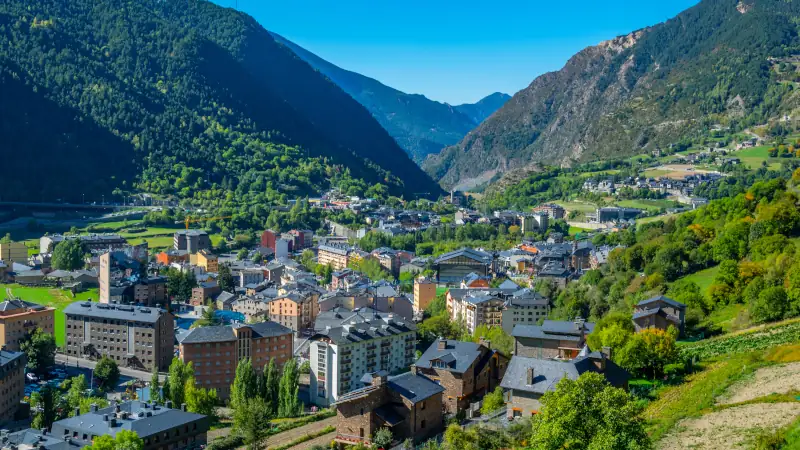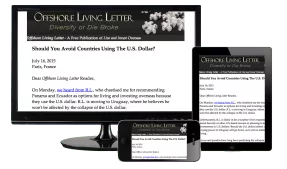
What Happens When Banks Fail
It looked like 2023 was about to become another 2008.
History repeating itself, fifteen years later…
You probably watched the news at the time…
After three banks collapsed in one week in America—including the second and third-largest banking failures in U.S. history (Silicon Valley Bank and Signature)—the FDIC and the Biden administration stepped in, guaranteeing deposits even above the FDIC limit of $250k…
The move was designed to prevent a further run on banks and stop the bleeding…
But the chaos continued: The stock prices of regional U.S. banks took huge hits, and the “contagion” spread as far as Europe, with the stock of Swiss lender Credit Suisse dropping to a record low, and the Swiss government stepping in to arrange a “shotgun marriage” with UBS, a former rival bank, which bought Credit Suisse for just over $3 billion.
Meanwhile, back in the States, eleven major banks grouped together to provide a $30 billion bailout to embattled First Republic Bank, which still did not halt its troubles. It soon went out of business, too.
The whole episode—the “bank crisis of 2023”—was a wake-up call for Americans…
Few people in the States—at least in normal times—think their bank will fail.
But this story just proves, yet again, that it can happen—even in supposedly the most developed economy in the world, even with a bank serving what many believed to be a gold mine that would never run dry (the Silicon Valley start-up sector)…
I can personally empathize with the depositors…
I’ve had three banks close on me overseas. Two in Panama and one in Andorra.
In each case, the bank was bought by another bank and reopened. But it took around eighteen months each time for us to get access to our funds again…
The first time was in Panama, and the bank was a subsidiary of a bank in Aruba that was owned by an American from Texas (I think). He had some issues with the U.S. government (the SEC, if I remember correctly), and the bank in Aruba and a sister bank in the United States were taken over by U.S. authorities.
They tried to seize the assets of the Panama subsidiary, but the Panama Superintendent of Banks didn’t let them. The Panama bank had nothing to do with the allegations against the guy or the bank in Aruba.
Go Offshore Today
Sign up to our free twice a week dispatch Offshore Living Letter
and immediately receive our FREE research report
on how to live tax-free today, while earning up to $215,200!
Eventually, that bank was bought by someone, and we got one hundred percent of our money back.
The third time was in Panama as well… and was the new bank that bought the bank above. I didn’t move the bank account when the bank reopened the first time because I thought lightning wasn’t likely to strike again… but it did.
This time it was because the bank was accused of being complicit in a money laundering operation by the family that owned the biggest duty-free shops at Panama City’s international airport.
The U.S. government (concerned about money laundering) was the triggering factor in this case as well.
In fact, this case caused upheaval in Panama as the businesses involved were shut down for a while, and when the duty-free shops reopened at Tocumen International Airport, they couldn’t accept credit cards. They were blocked from having a merchant account for credit card processing. They were only accepting cash.
That bank was bought by a bank from Costa Rica, but they didn’t want to take on the risk from the loan portfolio, so anyone who had more than a certain amount on deposit took a twenty or twenty-five percent haircut (I was one of those).
The haircut was converted to preferred shares in the bank, and shareholders would be paid back their percentage of the loan portfolio as it was collected. So far, almost nothing of the loan portfolio has been recovered. Many of the properties are just sitting there with a trustee trying to sell them.
Of course, the trustee gets paid, so there will never be anything substantial for the account holders. The preferred shares pay out a dividend each month or quarter that will never repay the money either, based on current numbers. Still, we got eighty percent of our money back.
The second time was an Andorran bank that was, yes, you guessed it, shut down by the U.S. government after accusations of money laundering.
That bank was also eventually bought by another bank and reopened. We got one hundred percent of our money back, but they had to redo the Know Your Customer (KYC) process with every account holder, which meant Kathleen and I had to go to Andorra to meet with a banker.
We had originally opened the account with an interview at their Panama branch, which was obviously easier for us. The Panama branch wasn’t directly affected by the accusations, like in scenario one, but was no longer part of the parent bank in Andorra.
So, we drove from Paris to Andorra. That’s a beautiful drive… but ridiculously long. It took about ten hours. We did eventually move all our money out of that bank, as it just wasn’t convenient or useful by that point.
What’s the lesson from all that?
Bank closures happen in the States as well as overseas.
More than likely, unless you have huge sums on deposit, you’ll get all or most of your money back at some point.
But it’s just another reason to hedge your bets and spread your wealth around…
Stay diversified,




